- Home
- slideshows
- miscellaneous
- We got inside New York City's first-ever Amazon fulfillment center, where thousands of people work in a building large enough for 18 football fields
We got inside New York City's first-ever Amazon fulfillment center, where thousands of people work in a building large enough for 18 football fields
Amazon's first New York City fulfillment center is deep into Staten Island — it's literally next to the bridge that leads from Staten Island into New Jersey.

As you can see in the map below, the fulfillment center — codenamed "JFK8" — is at the western-most edge of Staten Island.
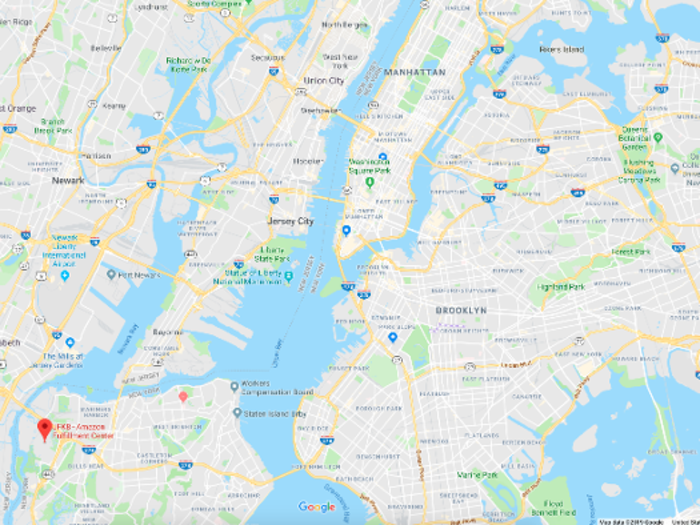
Other than the Staten Island Expressway and a handful of autobody shops, there's not much near the fulfillment center. I only knew I was getting close because I started seeing a ton of huge trucks.
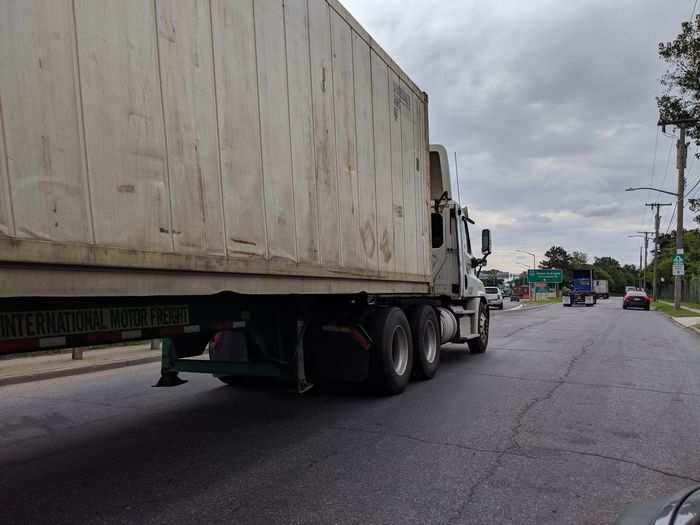
I followed the trucks down a set of unexciting roads to an industrial park, and that's where I first saw the massive fulfillment center.
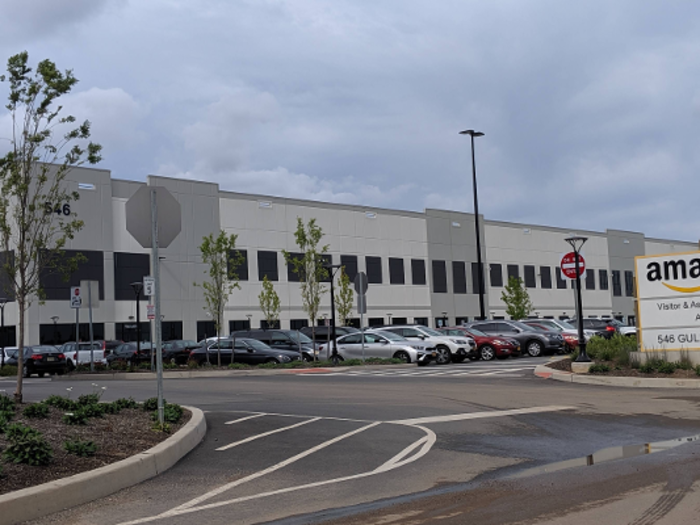
The parking lot for the fulfillment center was correspondingly massive for the thousands of employees who work there.
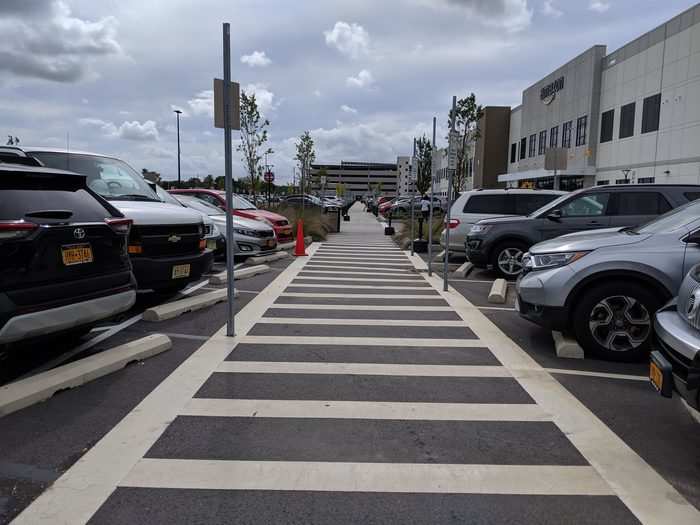
License plates in the parking lot were a mix of New Jersey and New York — a testament to the facility's location on the very edge of New York City, right next to the Jersey state line.
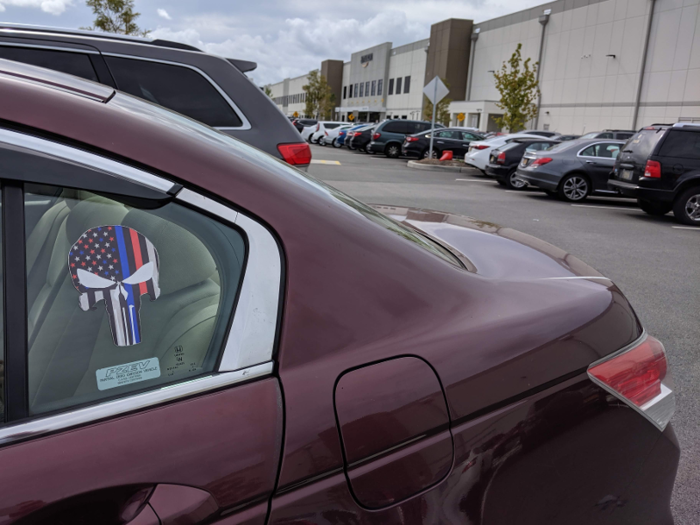
A food truck was serving lunch out in the parking lot, next to a bus stop where workers waited for a ride home.
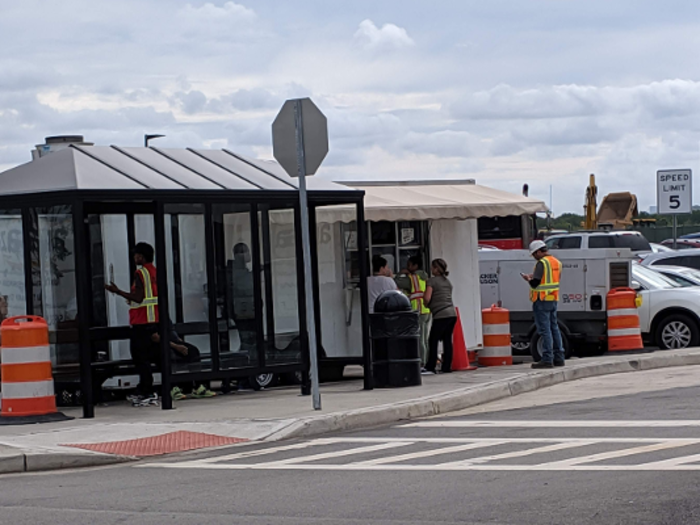
I headed inside for the tour, which was arranged by Amazon's public relations department.
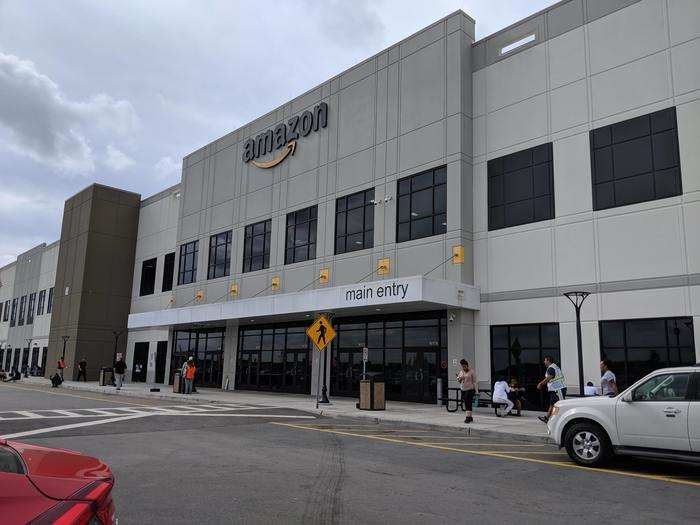
The very first thing I encountered was an elaborate security setup that employees have to go through every time they enter and leave the building:
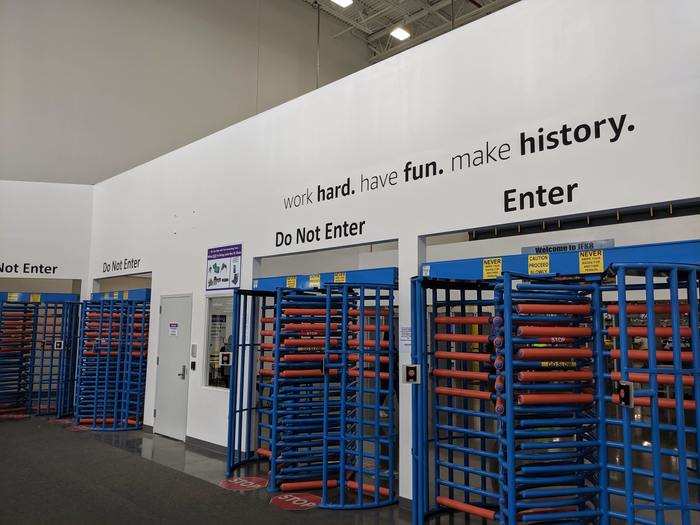
Notably, employees aren't allowed to bring a variety of personal items on the floor — and photography is "strictly prohibited."
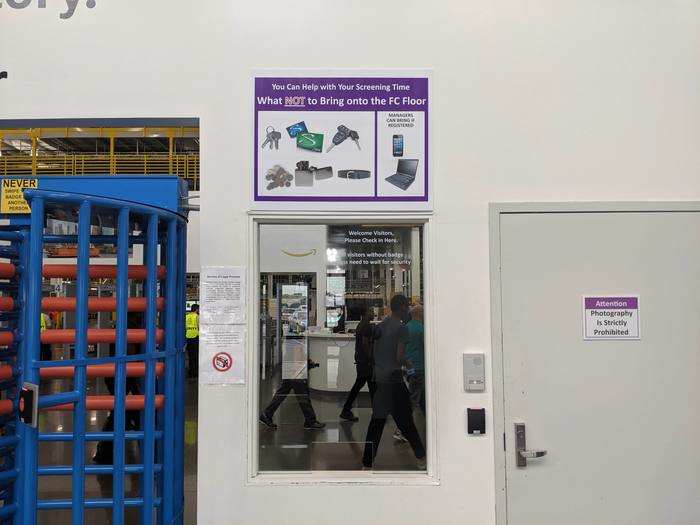
Before leaving, all employees are required to pass through a metal detector security check, as the facility handles millions of consumer products:
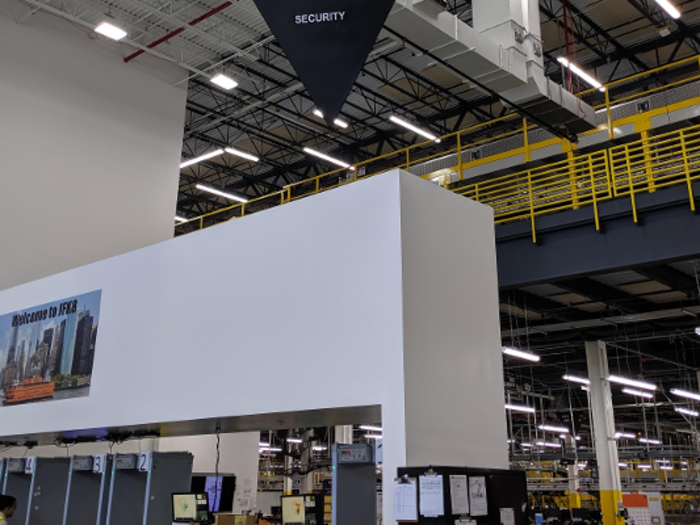
A handful of Amazon's shipping robots, signed by the initial opening staff of the Staten Island fulfillment center, hang over the entrance.
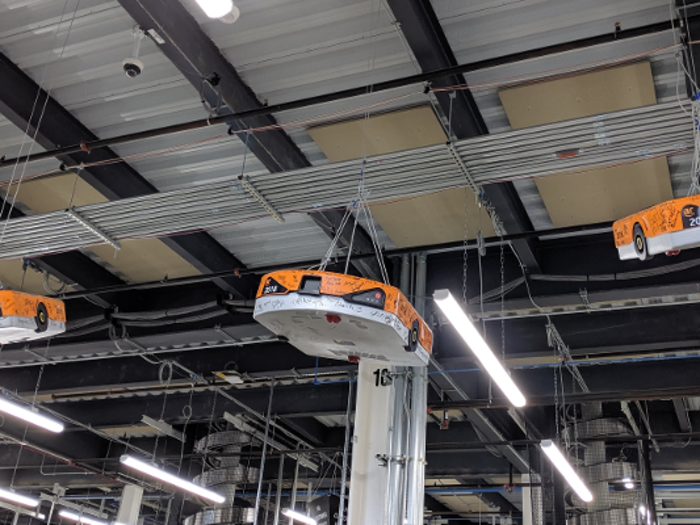
We'll see some of these guys in action later on in the tour, but these ones are only here to greet entrants:
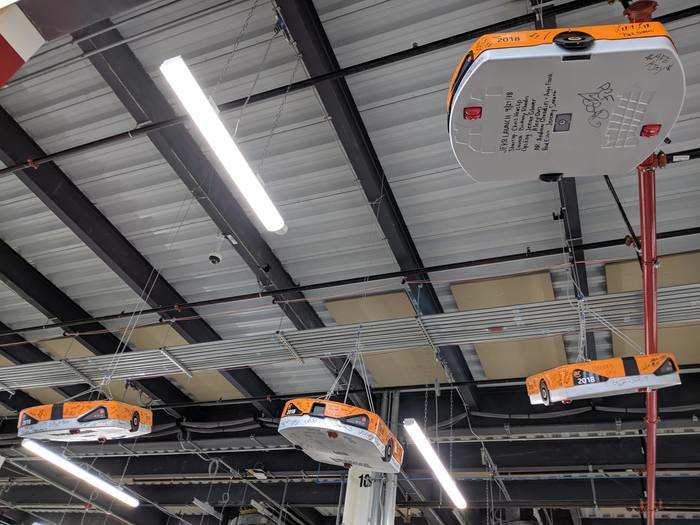
Employees punch in here and, more importantly, are able to grab things they need for work out of this (free) vending machine. It's got work gloves, orange safety vests, and box cutters — not exactly your typical vending machine stuff.

We started in receiving, where products come in to the facility and are sorted away before being packaged and sent out when orders come in.

These yellow plastic bins are called "totes" in the fulfillment center — everything that comes in or out of this warehouse must fit within one of these totes. There are over 40,000 such bins in this facility alone.
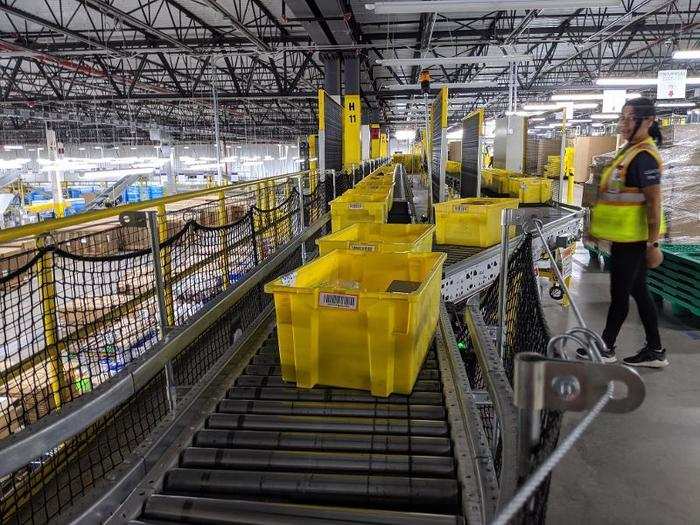
Notably, these totes also correspond to the type of items this fulfillment center ships: non-perishable goods that are "18 inches or smaller," general manager Chris Colvin said. "And generally speaking under 25 pounds is most of our items. The computer won't even let us put in anything above 49 pounds."
The totes, full of random products, are all filtered into these individual stations where people unpack them into larger storage containers operated by robots.

To this employee's left, totes come in full of products. Each item is scanned, which sets off a series of automated actions that guide the employee to where to place the item on the storage compartment.
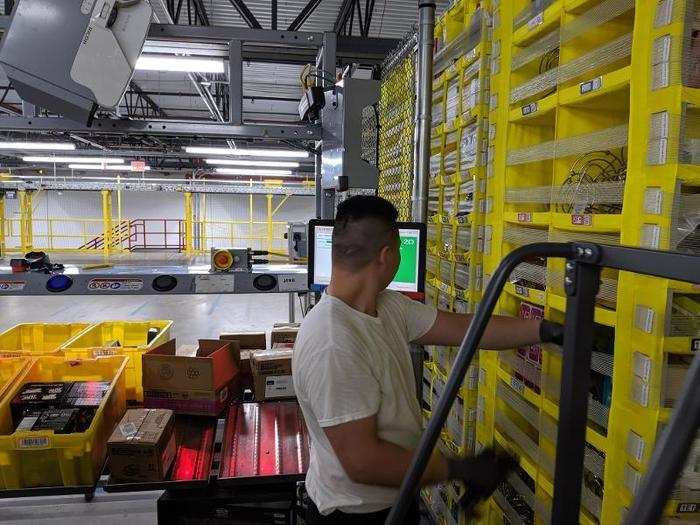
A Ricoh projector over each station literally shines guiding lights onto individual sections of the yellow storage bin.
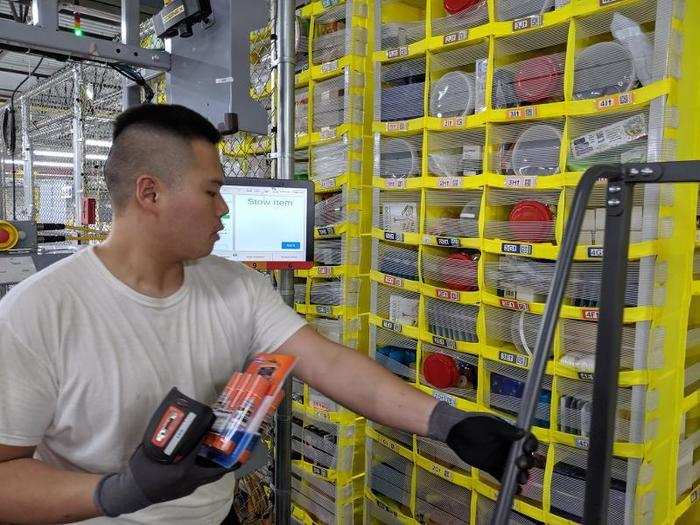
There's a method to the madness here: Randomizing items means being able to react to each individual order rather than seeking out product sections for each order.
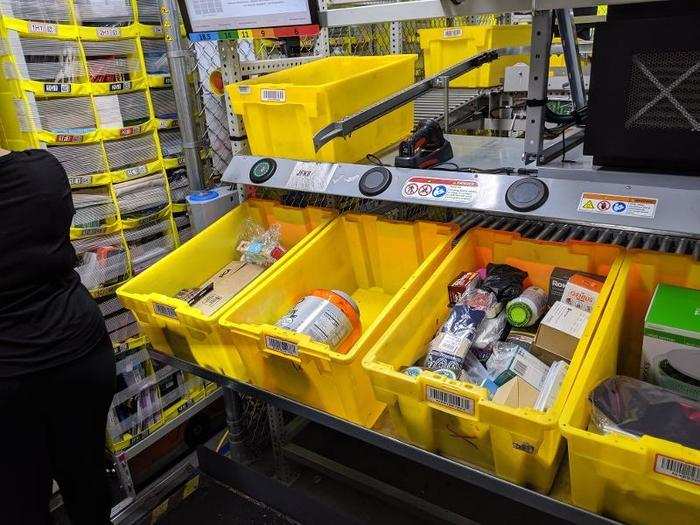
As items are scanned and filed away, a computer system is constantly optimizing the worker's next moves. And all that data is also communicated to a series of robots that are constantly moving the storage containers where they need to be.
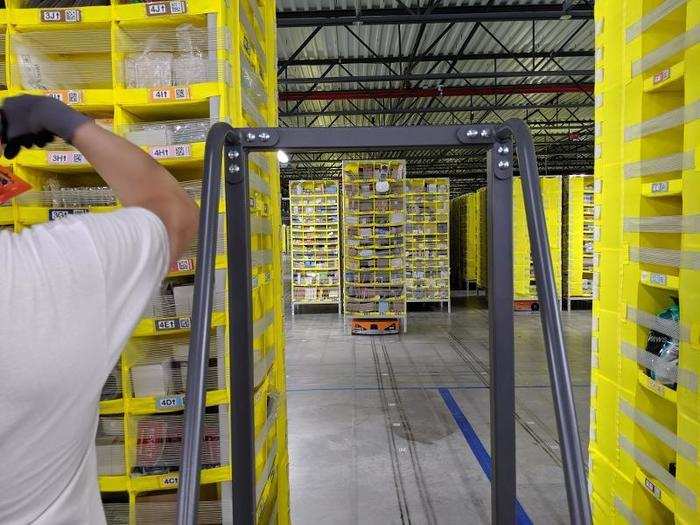
Notably, there are no humans out on this part of the floor — and with good reason. The robots are whisking hundreds of pounds of products all over the place, and they're not equipped to deal with human movement.
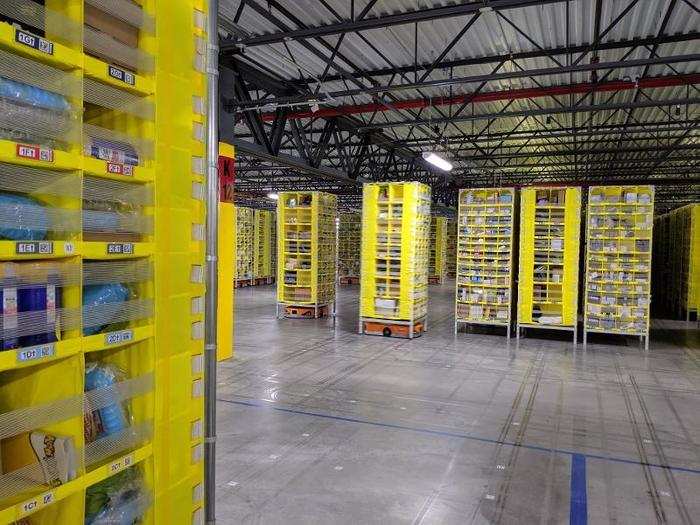
There are prominent signs warning of the potential safety hazards of interacting with the robots:
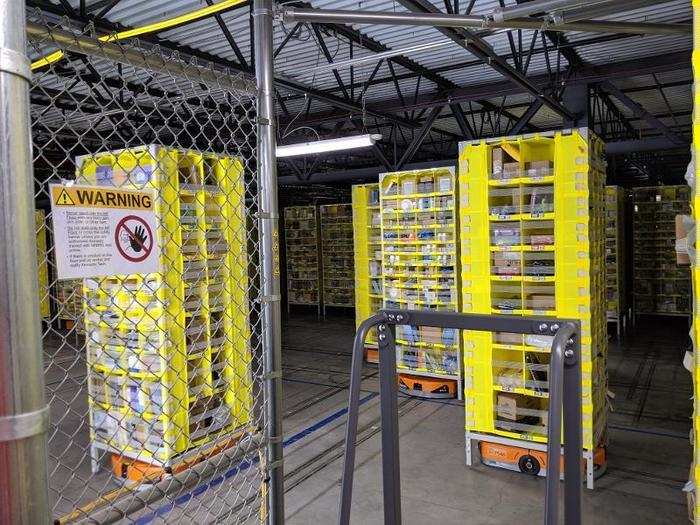
But even robots make mistakes — products fall to the floor and must be picked up. And that's when you turn to this gentleman here and his team of "Amnesty Tech."
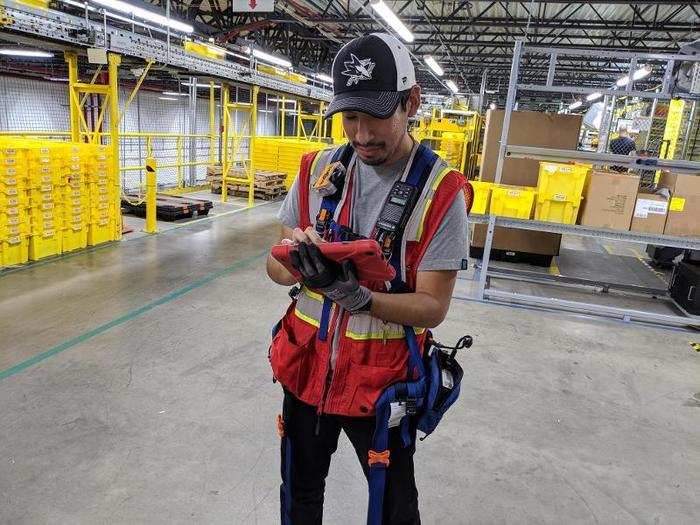
On each of his hips, a computer; on each shoulder, tech for communicating with people (a walkie talkie) and with robots (a flashing light). And in his hands is a tablet that shows a virtual display of the area in the warehouse where robots are.
The Amnesty Tech team is allowed to go on the part of the floor where the robots move product.
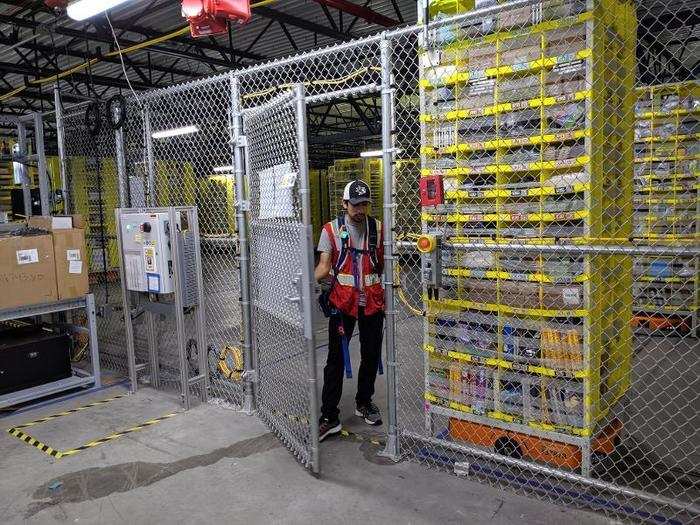
As the robots get closer, they slow down or outright stop. As he moves, they correspondingly move, slow down, or stop based on his location. The tech he's wearing is what enables the robots to know he's there.

After items are received and sorted, their next stop is the packing department.
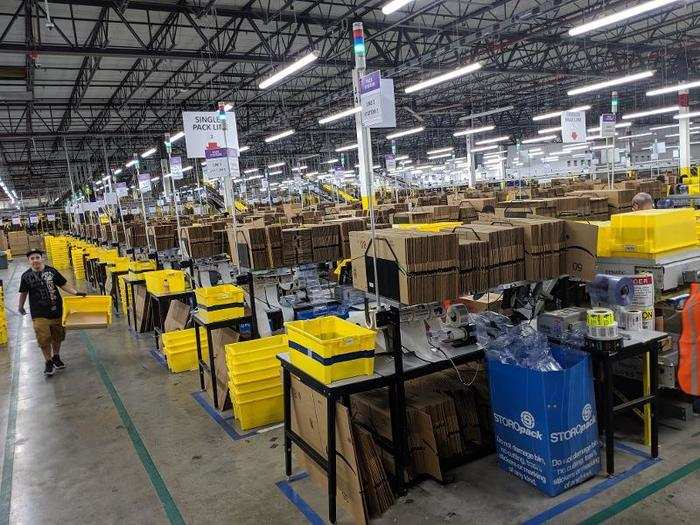
Items come into packing in the signature yellow totes, are scanned, and a bunch of information pops up telling the packer which type of box to use.

The tape dispenser even dispenses a specific amount of tape that corresponds to the right sized box. If for some reason the computer guesses wrong, and the packer needs a different sized box, they can use their judgment and manually request a larger amount of tape.
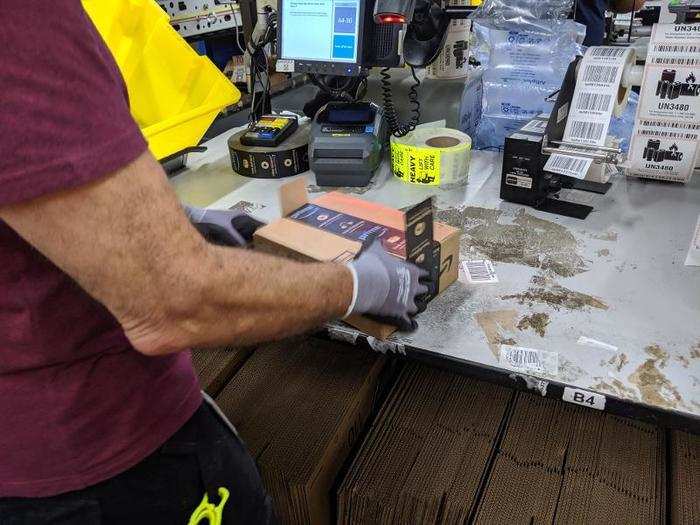
From there, the packer scans the box and throws the completed package onto another conveyor belt where they'll take a trip to labeling:
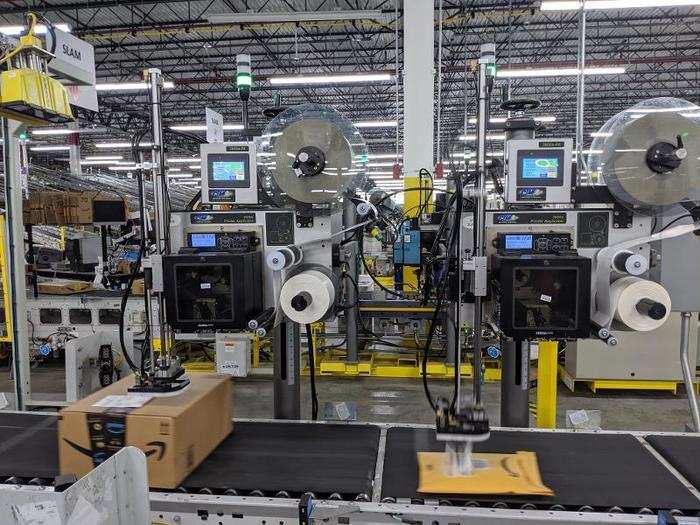
The shipping area seen here was one of the most immediately impressive parts of the facility. Packages are automatically whisked from the conveyor belt to different chutes solely by the metal slats moving from left to right (the yellow bumps are enough to nudge them off).
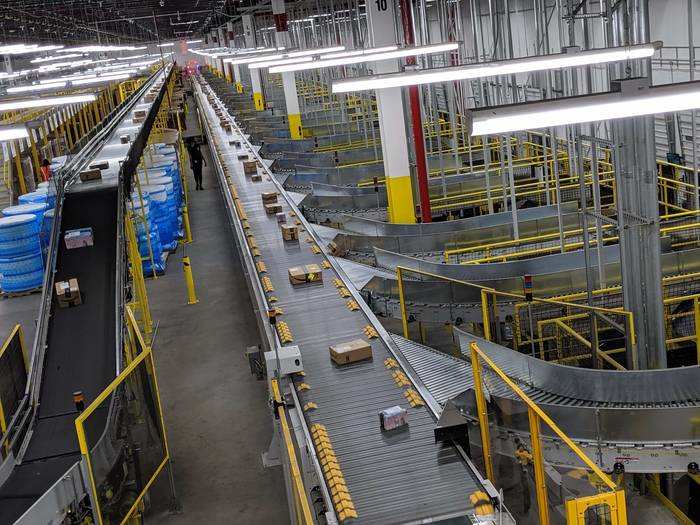
Packages are pushed as close as possible to the shipping bay, where employees play a careful game of shipping "Tetris" to pack trucks as efficiently as possible:
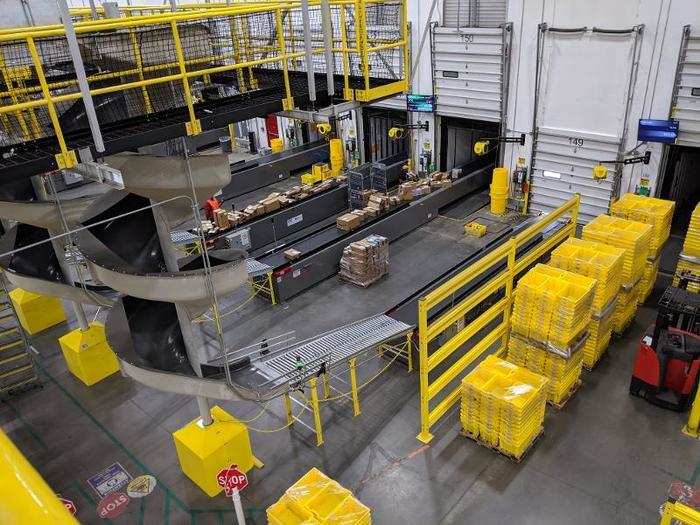
Throughout the facility, vast quantities of shipping supplies were being stored.
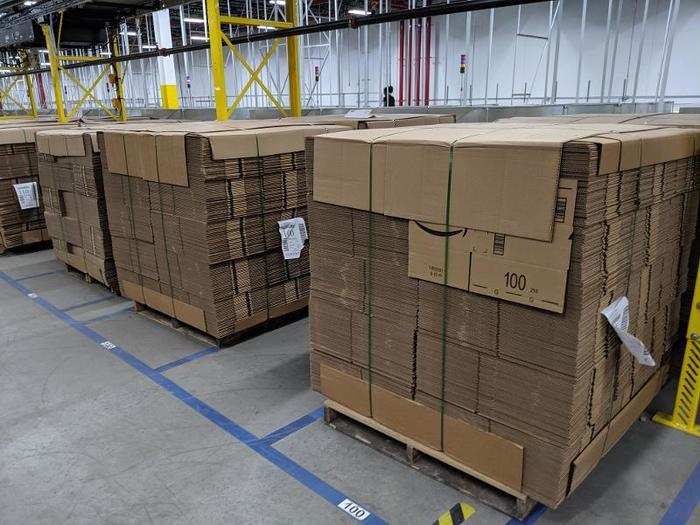
It's impossible to overstate the absolutely massive quantities of shipping supplies I saw all over. These are just a small sample.

On our way out of the facility, I got a look at one of two lunch areas. There's no on-site cafeteria, but there are dozens of microwaves for the frozen meals available in vending machines.
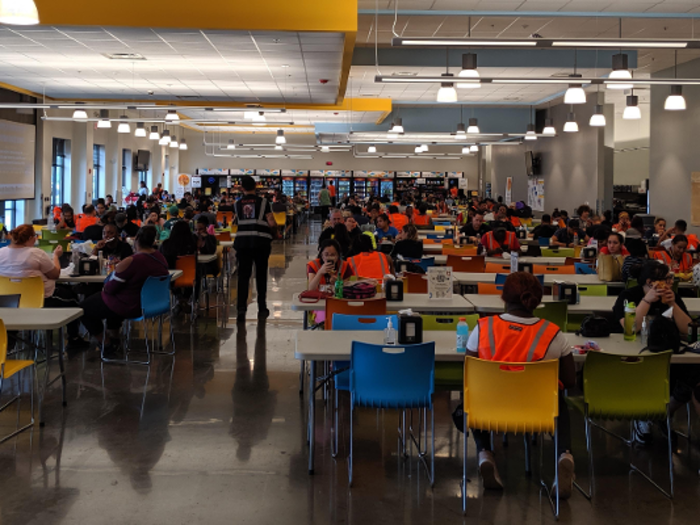
The options are largely processed snacks and the kind of junk food you'd find at a 7-11: Instant ramen, a variety of chips and candy, and frozen meals. The options aren't great.
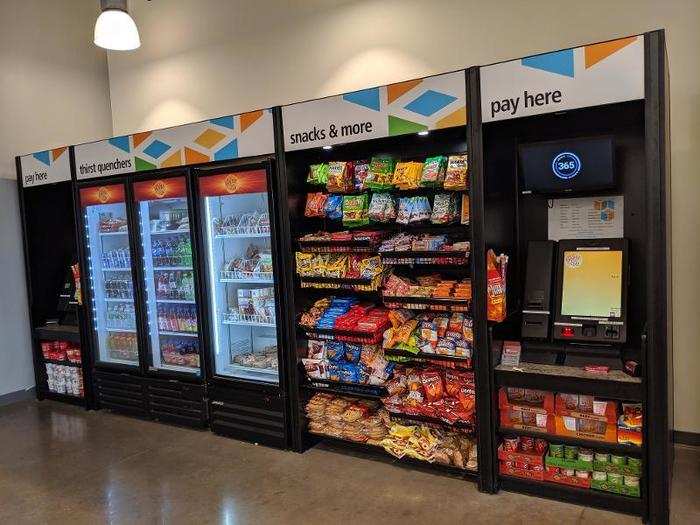
Since the fulfillment center is in an industrial park far from other parts of Staten Island, it's not possible to quickly grab food outside of the facility. There are refrigerators for employees to store food from home, and some relatively paltry options to buy, and there's a food truck parked outside.
I was also told that various fast food options are sometimes available, including Chick-fil-a.
On my way out, I took a walk around the back of the building to see what all those trucks looked like from the outside. That's a lot of trucks!
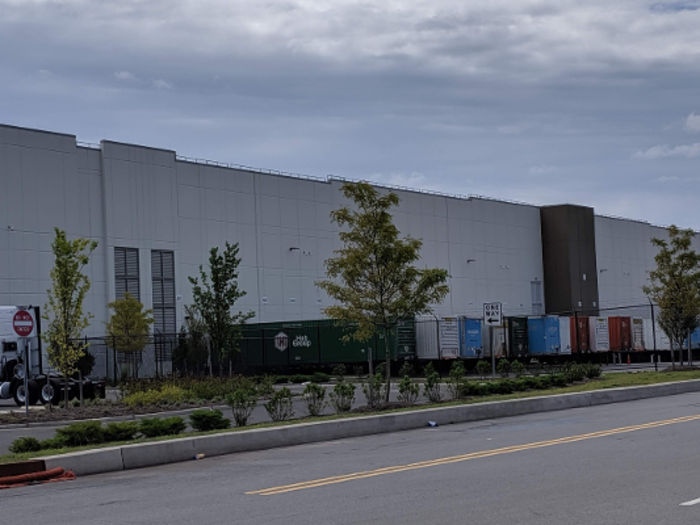
And with that, I left Amazon's first New York City fulfillment center, just like millions of products and people before me.
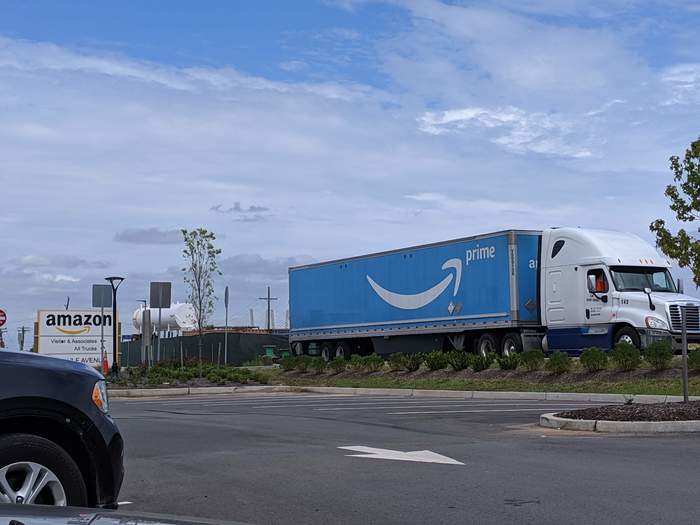
Popular Right Now
Popular Keywords
Advertisement